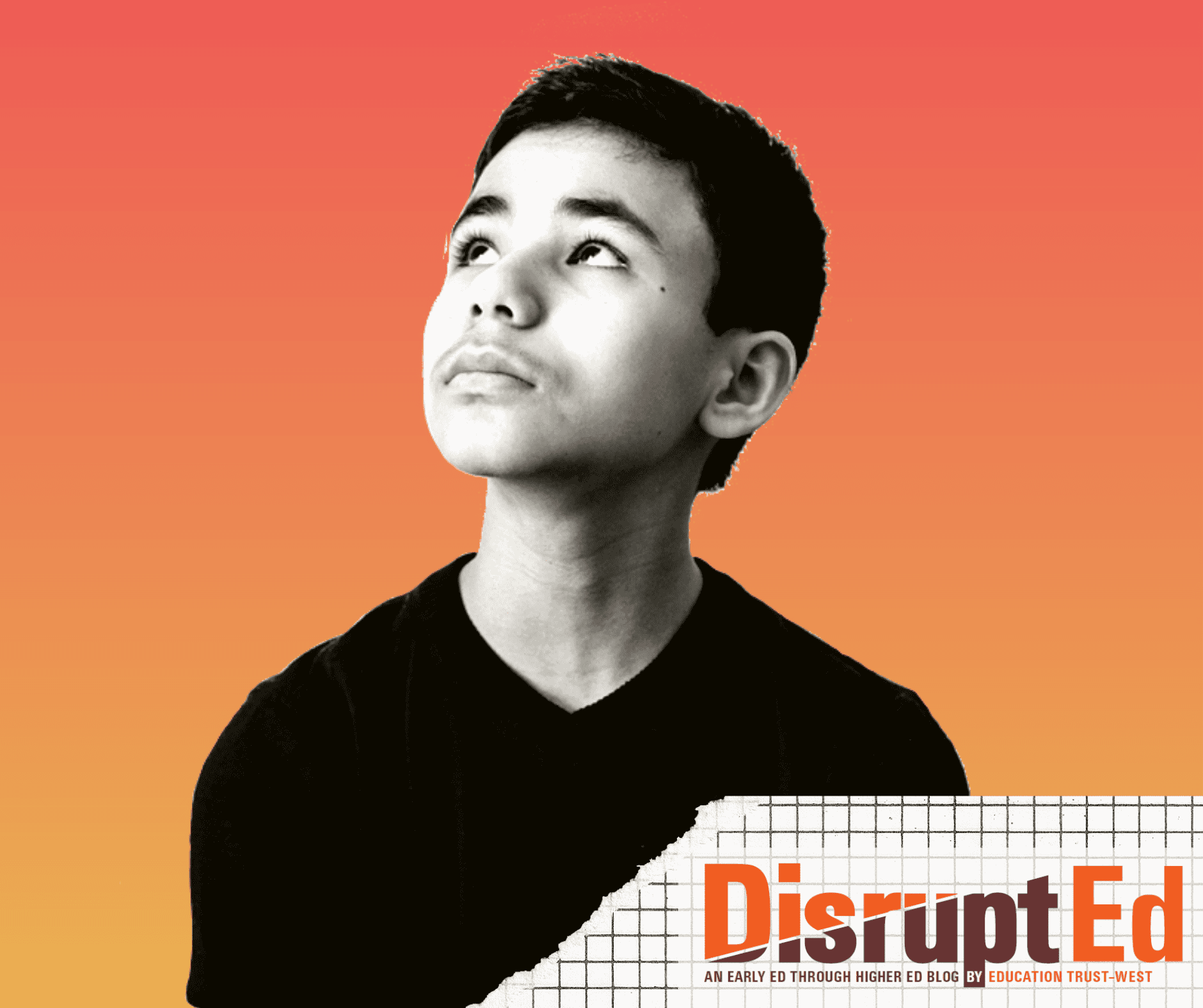Too often, schools and educators treat English learners (ELs) as students in waiting — learners whose academic development cannot seriously be engaged or advanced until their English language development has reached a certain level. This doesn’t just reflect a deep bias against linguistically and culturally diverse students, it also hints at a fundamentally mistaken assumption that academic content (math) and language learning are discrete projects. For many years, this misguided framing has guided math instruction in California — too often, ELs have been pulled away from academic learning opportunities to receive English as a Second Language instruction.
This approach has produced frustrating results. In the 2018-19 school year, we supported less than one in 10 English learners across the middle school grades to master math content.
These gaps reflect systemic biases in California’s approach to teaching mathematics. They’re evidence that ELs aren’t being given the opportunities they deserve to succeed in math during the period that they are still developing their English proficiencies. This doesn’t just harm EL students’ math learning; it also misses a powerful opportunity for them to learn English. Students learn languages best when they use them to engage in rich academic content. Math is full of opportunities for students to connect their lives and learning.
Unfortunately, at present, too many math teachers are missing chances to make those links and build upon ELs’ linguistic and cultural assets. Worse, the pandemic threatens to exacerbate inequities in math, and now more than ever, we need tools and structures to not only support students and educators, but to actually transform math education.
As we wrote in a 2018 EdTrust–West report, Unlocking Learning II: Math as a Lever for English Learner Equity, “Achievement and opportunity gaps can be closed by implementing research-supported instructional practices designed for English learners and by providing teachers with the training, time, and support to transform their teaching.”
To that end, the EdTrust–West and Californians Together are working with educators, researchers, advocates, and other organizational partners to ensure that educators have tools in the near and long term to strengthen their math instruction and ensure students — particularly English learners — have equitable access to rigorous and affirming math learning opportunities. EdTrust-West and Californians Together, along with other education advocacy and research organizations, including county offices of education are also leading an effort focused on ensuring that equity and the needs of ELs are incorporated within the 2021 Mathematics Framework revision.
Math Equity Toolkit
Today, the EdTrust–West releases A Pathway to Equitable Math Instruction, a toolkit designed to support equitable access to grade-level priority math standards in 6th–8th grade. The toolkit contains a series of free resources for curriculum planning while also offering resources for self-reflection around developing anti-racist math practices. The toolkit was collaboratively developed by experts in the field — including the English Learner Success Forum, Californians Together, the California Association for Bilingual Education (CABE), and the Center for Equity for English Learners (CEEL) at Loyola Marymount University, among many others — to guide math teachers to better serve ELs and Black and Latinx students.
The Toolkit is oriented around principles such as access to high-quality, standards-aligned curriculum being universal and barriers to equitable access being the result of structural and systemically racist principles rather than student backgrounds, cultures, or family income. The Pathway covers critical topics: teacher beliefs, content and conceptual understanding, English language development and scaffolding, social emotional academic development, and teaching coaching and support.
With the pandemic exacerbating the historical inequities experienced by underserved students, now is the time to transform math instruction by creating equitable access to quality math instruction and continuing to confront our systems and beliefs rooted in racism.
Revising the Frameworks Guiding Math Instruction in California
California is undertaking a revision of its Mathematics Framework this fall. Given that 44 percent of California students speak a non-English language at home, it is critical that the state’s Mathematics Curriculum Framework and Evaluation Criteria Committee (CFCC) incorporates the needs of ELs. This framework will guide the state’s educators as they implement the state’s math standards. It will also offer guidance to curriculum developers around the instructional approaches, materials, and assessments the state is expecting. In short, the revisions present an important opportunity for EL advocates to uplift equity throughout the public education system.
The window for this opportunity begins now. While the revisions won’t be finalized until November 2021, there are multiple points for EL advocates to engage with the process in the coming months. For example, each CFCC meeting occurring now through Fall 2021 presents an opportunity for joint and individual public comment. As the revisions process continues, the EdTrust-West and Californians Together will continue to convene advocates to review the proposed changes and provide feedback on the document.
The impact of such engagement is critical, not only to ensure that ELs have access to rigorous Math content, but also because a Mathematics Framework infused with the concepts of equity and access can serve as an exemplar for future framework updates in other content areas. As we continue to review proposed changes, we will continue to advocate for a framework that provides examples and vignettes that are culturally relevant and come from diverse perspectives so that students see themselves; offers examples of differentiation for diverse students; incorporates ELD standards throughout; and provides examples of integrated ELD within math classrooms.
No Time Like the Present
The pandemic has given U.S. public education no shortage of past, present, and future challenges. It may be tempting to use these as excuses to delay work on important equity considerations, such as centering ELs in California’s math framework. But the unequal impacts of the pandemic make clear that educational equity must be a guiding priority in all future public education initiatives. We must capitalize on opportunities like this one rather than shying away from them.


